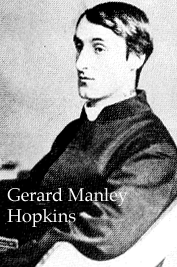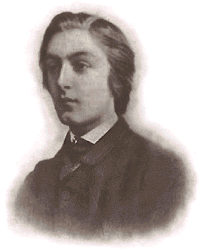
Hopkins's Poems
Hopkins Society Of Ireland
As I look back over my research, the landscape is dominated by Hopkins. In a review of Michael Allsopp and David Downes, Eds. Saving Beauty: Further Studies in Hopkins, published in English Literature in Transition, 38:3 (Sept. 95), I surveyed reader responses to Hopkins, and in an article I published in 98, I reflected on my own reading of Hopkins over the previous 35 years: "Hopkins: A Reader Response," The Hopkins Quarterly 25:3-4 (1998): 91-94, revised as ≥Vigorous Discipline≤ in Hopkins Variations Ed. Joaquin Kuhn and Joseph J. Feeney, S. J. New York: Fordham Univ. P and Philadelphia, St. Joseph's Univ. P., 2002, pp. 196-200.
Jerome Bump's publications on Hopkins
Brief Biography. Hopkins,
Gerard Manley (1844-1889), English poet, whose work
expresses an intense response to the natural world, and
whose innovations in technique produced an intricately
woven tapestry of language that embodied this response.
Hopkins was born in Stratford, Essex (near London). He was educated at Balliol College, University of Oxford, where in 1866 he converted to Roman Catholicism. Upon entering the Jesuit order two years later, he destroyed the poetry he had already written. Between 1874 and 1877, as a student of theology in northern Wales, Hopkins learned Welsh; inspired by the language and by its poetry, he began to write again (but only after his superiors in the church encouraged him to do so). One of his initial efforts was “The Wreck of the Deutschland” (1875). This long religious poem, about the martyrdom of a group of shipwrecked German nuns, evinces the first use of techniques perfected by Hopkins in later works such as “The Windhover,” “Pied Beauty,” “Duns Scotus' Oxford,” and “Henry Purcell.” These lyrics are attempts to capture the uniqueness—or inscape, as Hopkins termed it—of natural objects, by the use of internal rhyme, alliteration, and compound metaphor and by the use of “sprung rhythm.” This verse structure, so named by Hopkins because it seems abrupt in contrast to the running rhythm typical of the poetry of his time, approximates the stresses of natural speech. It differs from the conventional system of a regular number of stressed and unstressed syllables per foot (see Versification).
In 1877 Hopkins was ordained in the Jesuit order and served as a parish priest and teacher in England and Scotland before becoming a professor of Greek at University College, Dublin, Ireland, in 1884. His unhappy years in Ireland, shadowed by overwork and ill health, produced a series of poems known as the “terrible sonnets,” the first of which was “Carrion Comfort” (1885?). They reflect the conflict between his religious vocation and his attraction to the world of the senses.
With a few exceptions, Hopkins's poems were not published during his lifetime; they were read only by friends and fellow poets. After his death his friend the poet laureate Robert Bridges anthologized a selection of Hopkins's work. The first collected edition was published in 1918; a second, complete, edition appeared in 1930, whereupon his work received due recognition and established its influence on 20th-century English poetry. [1]
Footnotes
[1]"Hopkins, Gerard Manley," Microsoft∆ Encarta∆ 98 Encyclopedia. © 1993-1997 Microsoft Corporation. All rights reserved.

